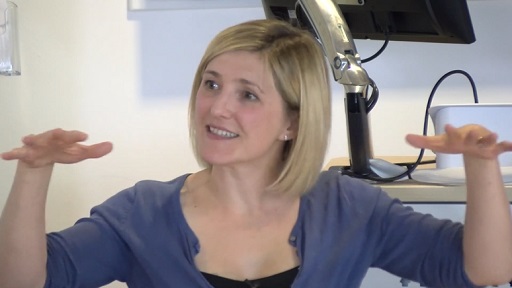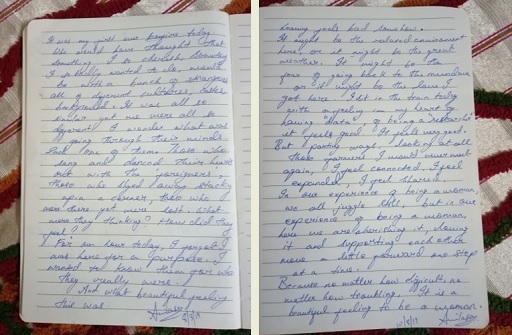Use 'Print preview' to check the number of pages and printer settings.
Print functionality varies between browsers.
Printable page generated Thursday, 13 November 2025, 4:00 PM
8 Lively encounters
Introduction
In this section of the course we return to the idea that empowering research relies on
New materialist scholarship sees the material world as made up not of fixed, stable entities, but as lively, relational and in constant flux (Fox and Alldred, 2017). Liveliness arises as a consequence of the agentic capacities of living and non-living things that researchers encounter through their actions and activities. This perspective draws attention away from studying what things are and towards what things do, i.e. their
This way of thinking ‘displaces the human subject’ as the centre of agentic action and assumes that assemblages of humans, non-humans, sociomaterial and discursive entities are connected in agential ways. Gherardi (2019: 5) uses the label ‘posthuman … practice-based studies’ to refer to these ‘situated and emergent processes’. She uses the concept of ‘affective ethnography’ to emphasise the importance of the lived, sensory experience of the researcher in the
Visual participatory research, and creative methods in studying memory and change
In Film Focus 13 and 14, researchers in organisation and media studies explain how they used creative, imaginative methods to develop a more empowering approach in their research. These accounts illustrate the importance of embodied encounters in enabling people to assemble in time and place and tell their stories. They also highlight the elusive, multiple and continually evolving realities that researchers encounter.
Activity: Film Focus 13, ‘Visual participatory research: from development to management studies’ – Lauren McCarthy, Royal Holloway, University of London, UK
Watch the film and make your own notes in response to the following questions:
- Can you identify a connection between the reluctance to use new visual methods and the fear of shifting the balance of power in a situation? How would you address this with people in positions of power?
- Think about how visual methods can be used to articulate and elicit what is usually taken for granted in a situation.
- How would you address potential shortcomings of visual methods; for example, reinforcing exclusion of those who cannot express themselves visually?

We recommend that you keep notes of your answers to these questions so you can return to them during the course.
Activity: Film Focus 14: ‘Creative methods in studying memory and change’ – Emily Keightley, Loughborough University, UK
Watch the film and make your own notes in response to the following questions:
- Reflect on how audio-visual resources such as film can be used to promote thought and conversation about past and current events. How useful are these resources in exploring diverse points of views?
- Reflect on the time, resources and skills needed to use audio-visual methods.

We recommend that you keep notes of your answers to these questions so you can return to them during the course.
Stories from the field
Avilasa Sengupta: leaving the field
You will recall Avilasa’s story from the field in Section 1. On entering the field, Avilasa, a researcher on the project team, identified her ethical dilemmas and noted down self-reflexive questions in her diary in the early stages of her research. As you will see from the diary excerpts below, Avilasa quickly went from questioning her place, her positionality, and her methods, to feeling as if she was part of the women’s group she studied and gaining a sense of empowerment as a woman from her research encounters. Here are two extracts from Avilasa’s research diary:
8 March 2019
It was my first ever bonfire today. Who would have thought that something I so cherish, something I so badly wanted to do, would be with a bunch of strangers, all of different cultures, castes, and backgrounds[?] It was all so similar yet we were all so different.
I wonder what was going through their minds. Each one of them. Those who sang and danced their hearts out with the ‘foreigners’, those who shied away stacking up in a corner, those who were there yet were lost. What were they thinking? How did they feel?
For an hour today, I forgot I was here for a purpose. I wanted to know them for who they really were.
And what a beautiful feeling this was.
10 March 2019
Leaving feels bad somehow.
It might be the relaxed environment here, or it might be the great weather. It might be the fear of going back to the mundane or it might be the love I got here.
I sit in the train today with a feeling in my heart of having ‘data’, of being a ‘researcher’[,] and it feels good. It feels very good. But parting ways, looking at all those farmers I would never meet again, I feel connected. I feel expanded, I feel shared.
In our experience of being a woman, we all juggle still. But in our experience of being a woman, here we are cherishing it, loving it and supporting each other move a little forward one step at a time.
Because no matter how difficult, no matter how troubling, it is a beautiful feeling to be a woman.

Activity
Avilasa’s diary
Read the extracts from Avliasa’s fieldnotes above and make your own notes in response to the following questions:
- Based on her diary entries, how and why do you think Avilasa’s positionality changed over the four days she spent conducting her research?
- How do you think the research participants enabled Avilasa to feel so welcome?
- What words would you use to describe how Avilasa benefited from her encounters?
We recommend that you keep notes of your answers to these questions so you can return to them during the course.
Comment
From Avilasa’s closing statement, it could even be inferred that Avilasa felt enlivened by the research. Her four days of research was a learning experience that not only enabled her to observe and document participants’ ecofeminist practices, but also to participate in those practices. Being invited to participate with and learn from research participants meant that Avilasa felt empowered through her embodied and lively learning encounters.
As you learned from the short film by Avilasa in Section 3 and the slideshow of Avilasa’s images of Earth Day in Section 4, the NGO she studied made space for equality and for voices to be heard. In Film Focus 10, Nirmal Puwar discusses this as ‘projecting it out there’. Using Spivak’s terminology, space is made for the subaltern to be heard. So whilst in everyday life young Indian women might feel disempowered by dominant and problematic patriarchal logics, in her research Avilasa discovered a space that had been created to empower and embolden women to lead new initiatives. Avilasa clearly left the field feeling more vital and motivated than when she first entered it.
Avilasa’s project is indicative of the spirit of empowering methodologies, which, when conducted ethically and equitably, can provide transformative experiences that open up new ways of seeing, sensing and feeling, or offer inspiration to take radical actions that can enable significant change.
Recommended reading
Back, L. and Puwar, N. (2012) ‘A manifesto for live methods: provocations and capacities’, The Sociological Review, 60: 6–17. Available at: https://pmt-eu.hosted.exlibrisgroup.com/ permalink/ f/ gvehrt/ TN_wj10.1111/ j.1467-954X.2012.02114.x (accessed 1 October 2019).
Fox, N.J. and Alldred, P. (2017) Sociology and the New Materialism: Theory, Research, Action, London: Sage. Available at: https://pmt-eu.hosted.exlibrisgroup.com/ permalink/ f/ gvehrt/ TN_sageknowb10.4135/ 9781526401915 (accessed 1 October 2019).
Gherardi, S. (2019) How to Conduct a Practice-based Study: Problems and Methods, Cheltenham: Edward Elgar. Available at: https://www.e-elgar.com/ shop/ how-to-conduct-a-practice-based-study?___website=uk_warehouse (accessed 1 October 2019).

